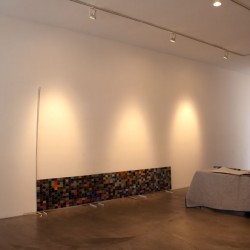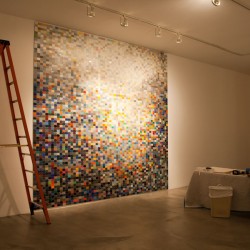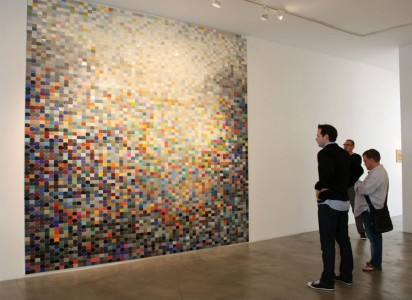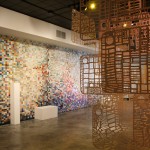Can color capture your mood better than words?
/
...........
....
........
......
Installing the show at Edward Cella in Los Angeles this week. In addition to the 4 collage pieces in the show based on self-tracking data -- I built a 12 ft by 12 ft wall 'Moodjam' based on tracking your mood in color. Made from 5000 Abet Laminati, italian countertop samples I found at the recycle center (and after I ran out the president of this company kindly sent me more). Based on the premise that not so far in the future a combination of facial recognition, GSR (galvanic skin response) and HRV (heart rate variability) will be able to automatically capture and assess your stress, nervousness, and general mood. I manually track my mood most every day at my friend Ian Li's site www.moodjam.com . Try it, it's more accurate than you'd imagine.
Show opens on Saturday Feb 11. If you're anywhere in Los Angeles before end of March 2012, totally worth a visit. Edward Cella on Wilshire, directly across from LACMA. Tim Hawkinson (loooooong time favorite artist) and Lynn Aldrich, amazing sculpture are the 3 artist exhibiting in this show. 'Death and Life of an Object".









